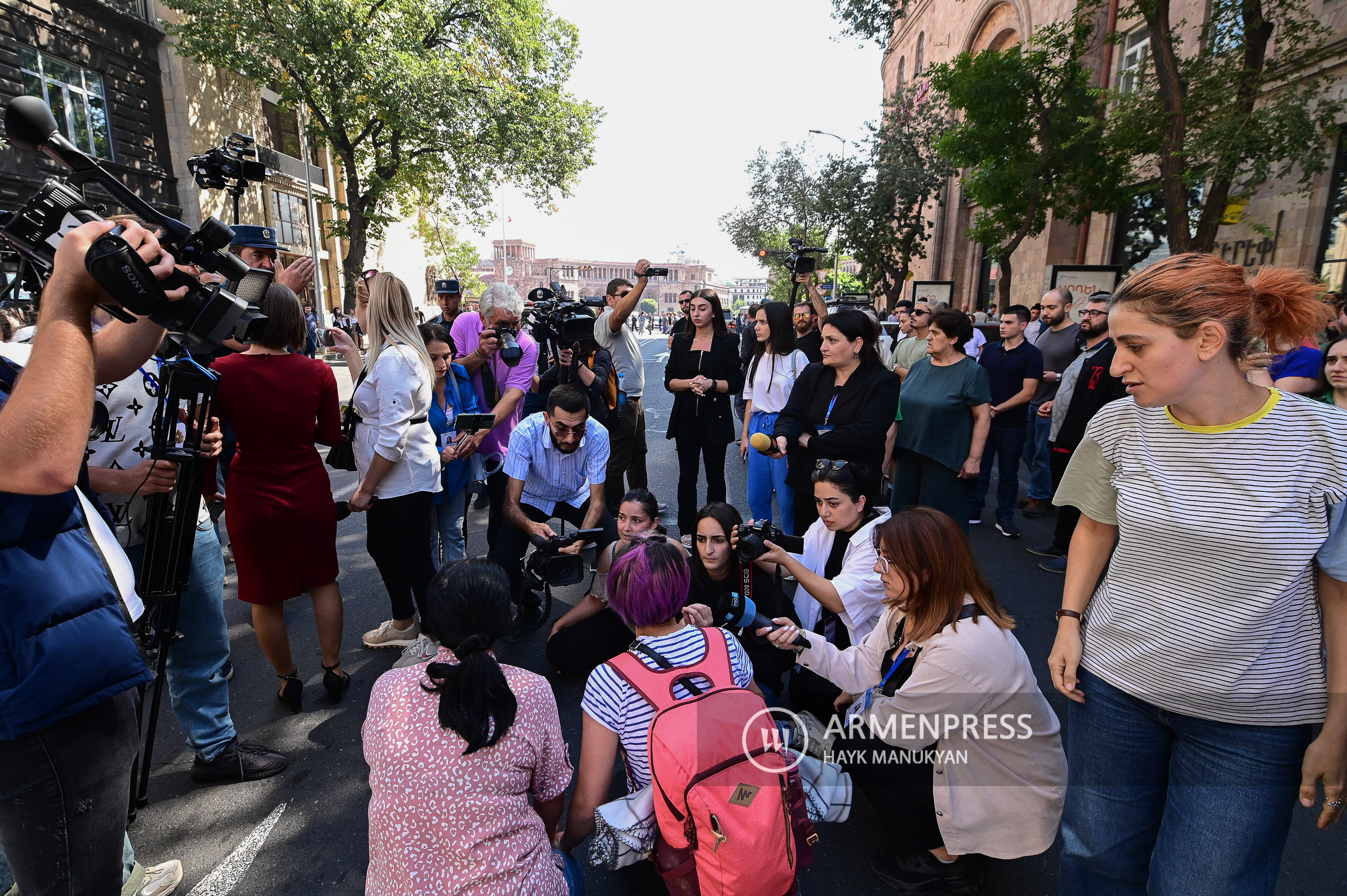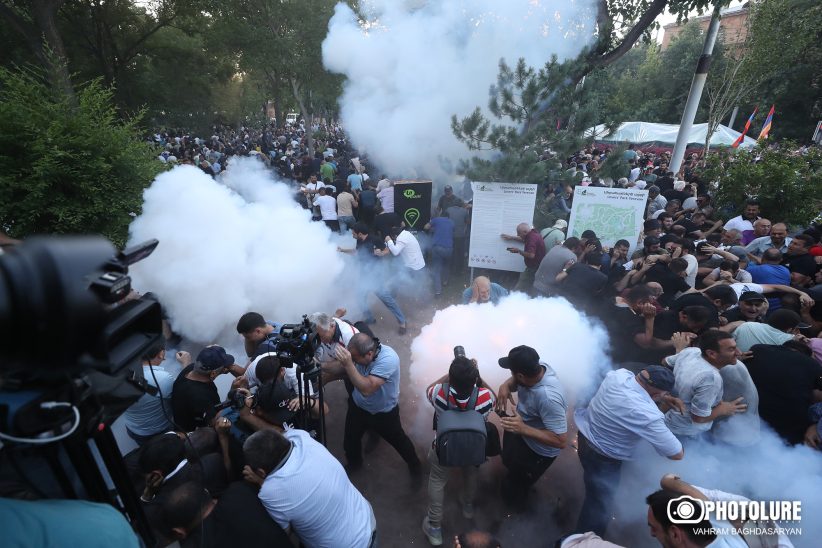The third quarter of 2023 was a hyper-tense period for the Armenian media due to the fatal events taking place in Armenia and Artsakh. The Azerbaijani military aggression following the blockade of Artsakh and the acute humanitarian crisis there, the emigration of almost all Artsakh Armenians to Armenia, the coverage of the processes related to accepting tens of thousands of families here and creating at least minimum living conditions required the greatest efforts from the editorial offices. During the period under review, the elections of Yerevan Council of the Elders also took place, with uncompromising pre-election struggle and post-election developments. As usual, these processes, including the events in Nagorno-Karabakh, were combined with the aggravation of the socio-political situation in the country. In those conditions, when it was necessary to cover mass protests and police operations, the work of journalists and cameramen became even more difficult.
In the course of demonstrations, assemblies, and other events held in the atmosphere of intolerance and hostility, cases of physical violence and various other pressures, expressions of hatred, and impolite treatment of media representatives were also recorded. Thus, if there was no violence against journalists since the beginning of the year, 3 such cases were recorded in the third quarter: 1 in Stepanakert and 2 in Yerevan, during the coverage of the election campaign and post-election protests.
The other recorded types of pressure, including insults and threats, amount to 13. It is noteworthy that in some cases, journalists filed lawsuits against the authors of Internet posts in connection with the spread of hate speech, as well as expressions discrediting their honor and dignity. According to the data of the “DataLex” information system, the Court of General Jurisdiction of Yerevan accepted 3 such cases for proceedings.
As for the number of new lawsuits filed against journalists and media, in the third quarter they amount to 6, 2 out of which are from the Government, 3 from representatives of business circles, and 1 from another citizen. It is alarming that judicial practice continues to witness processes where plaintiffs, in addition to lawsuit demands, also file motions to apply a freezing order on the assets and bank accounts of the media outlet and/or journalist as an injunction, and the courts uphold them, which, in fact, puts additional pressure on the media and contradicts international norms.
The situation also remains problematic in terms of violations of the right to receive and disseminate information. 33 cases were registered in July-September, which is 9 more than the previous quarter.
In general, during the period under review, CPFE recorded 49 violations of the rights of journalists and media. They are described in the relevant sections of the report, and 11 Armenian journalistic organizations issued joint statements regarding the most controversial ones.
One of the important processes of the third quarter is that, on the initiative of some of the above-mentioned journalistic organizations, a Rapid Response Fund is being created for media workers forcibly displaced from Artsakh, which is already developing mechanisms to support Artsakh colleagues, and is finding appropriate resources in order to provide social and professional assistance.








